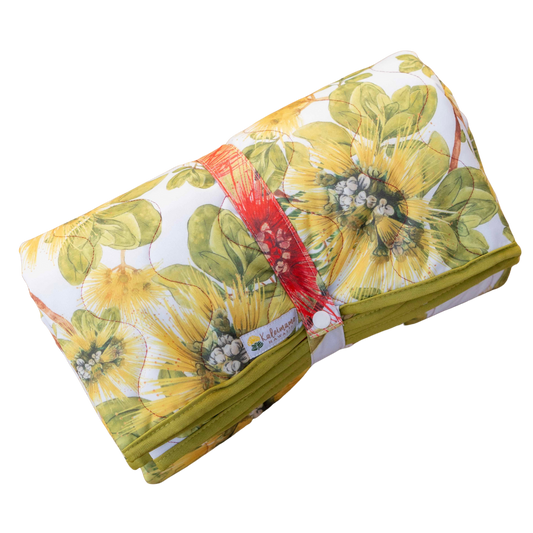Collection: Lehua Mamo
-
Moena Pāʻani (Play Mat)
Lehua Mamo
10 reviewsRegular price $74.00 USDRegular priceUnit price / per -
 Sold
Sold
outPepili (Stickers)
Lehua Mamo
No reviewsRegular price $3.00 USDRegular priceUnit price / per -
 Sold
Sold
out‘Eke Kōkua (Caddy)
Lehua Mamo
12 reviewsRegular price $48.00 USDRegular priceUnit price / per
About this print
Lehua Mamo

Our signature print, Lehua Mamo, features the yellow flower of the ‘ōhi‘a lehua tree. ʻŌhiʻa lehua is endemic to Hawai‘i and refers to both the tree and its flower. ʻŌhiʻa is one of the first plants to grow when new land is formed, helping to create livable habitats for other species to flourish. A favorite flower referenced in many of our mele (songs), the lehua is often compared to a beloved sweetheart, cherished friend, or treasured family member. While most ʻōhiʻa have red blossoms, the lehua mamo variety is highly valued because of its rarity, and is used by Native Hawaiians in lei and other cultural practices.
The wood of the ʻōhiʻa, as well as its flowers and leaves, have many uses in Hawaiian culture, and the esteemed blossom is often seen in beautiful lei. Unfortunately, a new fungal disease called Rapid ʻŌhiʻa Death (ROD), has infected over a million ʻōhiʻa, causing this important plant to die. There is no cure yet for ROD, so we must all help to stop the spread of ROD and ensure that this native plant lives on in perpetuity.








